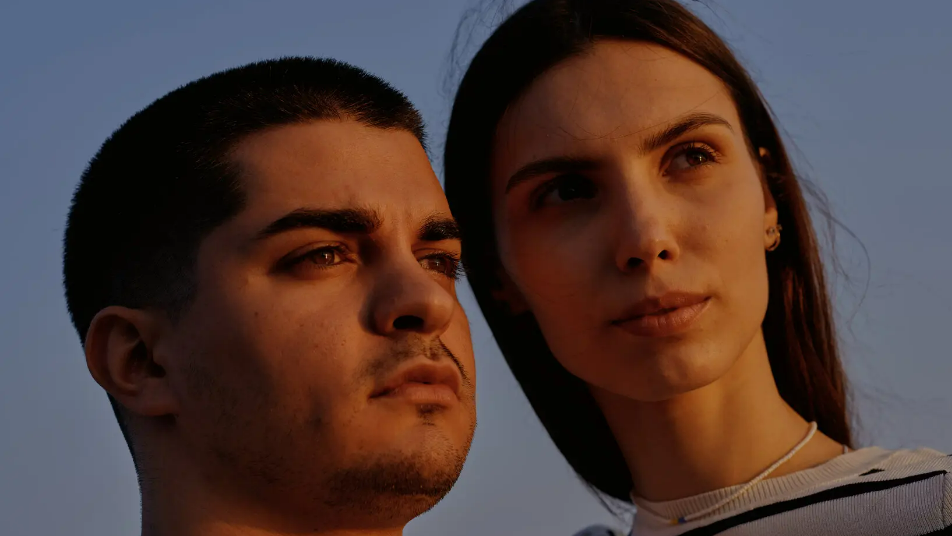In collaboration with the New York Times’ Neediest Cases Fund, we present this story of Ukrainian refugees fleeing the Russian invasion.
Four days before Russia launched its invasion of Ukraine, Tyhran Khosrovian unlocked the door to the apartment he had just rented to share with his girlfriend, Olena Holeha, in Mariupol. He had bought her a train ticket to come there from Kyiv, as a surprise.
The couple met in dental school in 2015 and have been together since 2019. He was tired of being apart from Ms. Holeha, and it was time to make a choice. “Ta-da,” Mr. Khosrovian sang as he threw open the door to their new home, revealing their view of the Sea of Azov.
The two moved in together on Feb. 19, but had just a few days of bliss. On Feb. 24, Russia invaded.
Over the next month, Ms. Holeha, 24, and Mr. Khosrovian, now 25, struggled to survive in a city under siege. Moscow had trained its sights on Mariupol, and warplanes streaked over the once-peaceful city. Bombs fell, demolishing homes. The smell of smoke filled the air.
They decided to stay by each other’s side, they said through an interpreter, eating together, sleeping together, even going to the outdoor toilet together. “If we didn’t leave each other, and there was a mass shelling, then we would die together,” Mr. Khosrovian said.
“It would be easier,” Ms. Holeha said, cutting in, “not to lose one another.”
“We could not keep on living if the other one died,” he said.
About a month after the war began — a month when they had planned to start their lives together, to take long walks by the sea, to decorate their apartment — they loaded a few belongings into a car and left Mariupol.
As the city slipped away behind them, Ms. Holeha and Mr. Khosrovian joined millions of their fellow Ukrainians, leaving their lives behind in order to save them. It has been the largest displacement of Europeans since World War II, according to the United Nations.
In the seven months since Russia invaded Ukraine, refugees have streamed across borders into Western Europe and the United States, as internally displaced people moved in with loved ones in the safer Ukrainian cities. International aid groups are on the move, too, organizing travel and providing housing, or helping with rent and food as people adjust to a new life.
In August, Ms. Holeha and Mr. Khosrovian made their way to New York City, home to the largest Ukrainian community in the United States. The couple now lives in Sheepshead Bay, Brooklyn, in a crowded apartment along with Mr. Khosrovian’s parents, his brother and his brother’s girlfriend.
At first, everyone slept on air mattresses. Theirs kept deflating, and they would wake up lying on the floor every morning.
But a grant from Catholic Charities of the Archdiocese of New York, a beneficiary of The New York Times Neediest Cases Fund, helped the group buy furniture: three bed frames, three mattresses and a dining room set for four, which together cost over $1,500.
The couple, who had graduated dental school, are learning English, trying to find their way. “We really want to apply our knowledge here, too,” Mr. Khosrovian said. “We would like to enroll, study, get a license, and just show what we can do.”
They want to enroll in a dentistry program once their language skills are good enough, and one day open a practice together.
“It’s all unreal to us,” Ms. Holeha said of being able to go to Central Park, a place they knew from “Home Alone 2: Lost in New York.” “Sometimes it’s unbelievable that we are here, really.”
Catholic Charities is among nine beneficiaries supported by The Neediest Cases Fund’s 111th annual campaign, which is now underway. During the first campaign, which unfolded in 1912, The Times’s publisher, Adolph S. Ochs, sent a journalist to report on those facing hardship and receiving help from social service agencies in New York City. The goal was to publish 100 stories. The short articles struck a chord with readers, who donated about $3,600.













